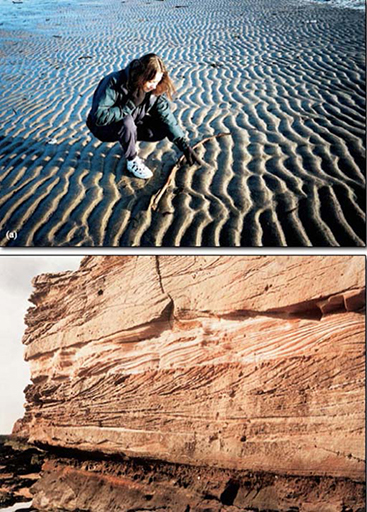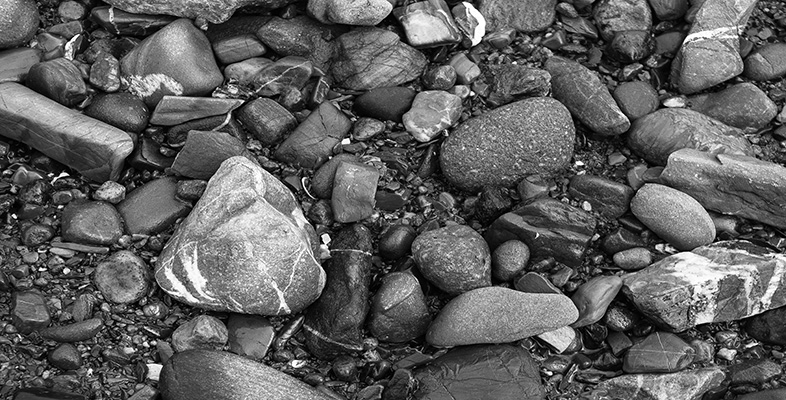1.4.6 Sedimentary structures
Consider some of the places where sedimentary materials are moved and deposited. Are the sediments always laid down in perfectly horizontal, perfectly flat layers? No; as often as not, the depositing surface is not perfectly flat. Instead, a system of parallel ridges, or ripple marks, like the ones shown in Figure 13a, form by the action that flowing water has on the erosion, transport and deposition of sand grains. In sedimentary strata, ripples and dunes (which are effectively larger versions of ripple marks) are normally seen in cross-section rather than in plan view, because pristine depositional surfaces are rarely exposed. In cross-section, the thin sedimentary layers that built up each ripple or dune can be visible, inclined at an angle to the top and bottom of the bed as a whole (Figure 13b). These structures are called cross-stratification and are a clue to the strength, direction and setting of the currents that produced them.

Many features associated with either erosion or deposition in a sedimentary environment can be preserved. For instance desert dunes can yield cross-stratification on a scale measured in many metres. All such structures are referred to as sedimentary structures and, as we have just seen, provide evidence with which to interpret ancient sedimentary environments.
